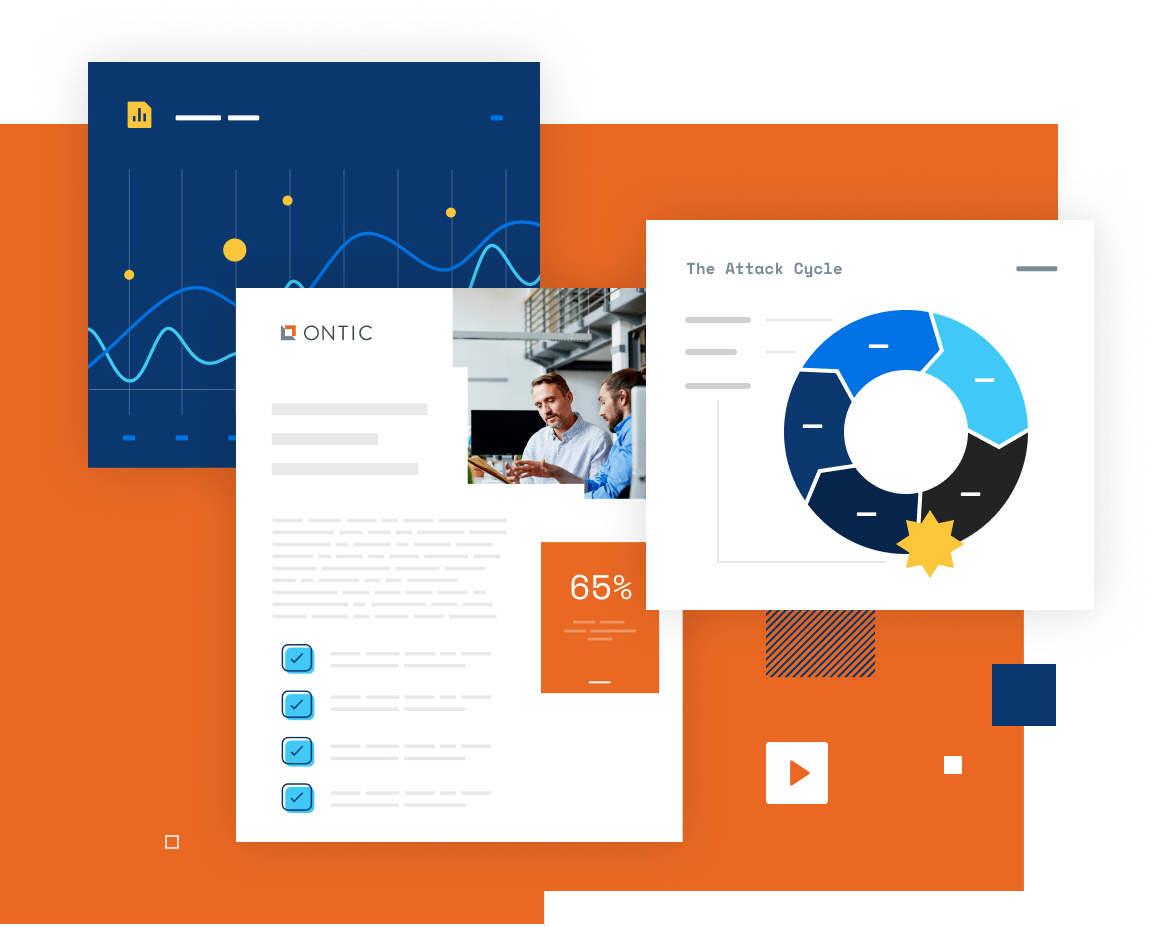Turning NITTF Compliance into Lasting Insider Risk Protection
How to go beyond basic compliance to build a proactive insider risk program for your agency

Insider threats remain one of the most complex and persistent challenges for government agencies. The National Insider Threat Task Force (NITTF) standards were designed to provide a unified framework for addressing these risks.
While following these standards is an important first step, true resilience requires more than simply checking the compliance box. The greater opportunity lies in using NITTF requirements as a catalyst to build stronger, more resilient program that protects sensitive information.
Below, we outline seven practical steps agencies can take to move beyond compliance and turn the NITTF framework into meaningful, lasting action.
7 ways to go beyond basic NITTF compliance
01
Define ownership
At the core of every successful insider threat program is clear accountability, which is also mandated by NITTF guidelines. Agencies should begin by designating a senior leader with the authority to set strategy, allocate resources, and drive collaboration across departments. This role is not symbolic — it signals that insider threat mitigation is a mission-critical priority.
To reinforce this leadership, establish a steering committee that brings together stakeholders from security, HR, IT, and legal. Documenting policies and decision-making frameworks ensures consistency while also demonstrating that governance is both present and active.
02
Build a skilled and well-trained team
No single department can manage insider threats in isolation. Agencies should invest in building teams with cross functional expertise spanning cybersecurity, physical security, legal, and behavioral analysis.
The NITTF guidelines mandate training for all cleared employees within 30 days of employment as well as annual refreshers, but leading agencies go further by embedding training into workplace culture. Instead of one-size-fits-all checklists, forward-looking organizations adopt role-based learning, tabletop exercises, and scenario training that reflect real-world risks.
Equally important is encouraging open dialogue and anonymous reporting. By making it easy — and expected — for employees to raise concerns, agencies can embed vigilance into the culture, turning every staff member into an active participant in risk reduction.
03
Connect the dots with centralized data
The NITTF guidelines specifically call for the ability to gather, share, and integrate data from across the organization — a recognition that insider threats rarely emerge from a single signal. More often, they are revealed through patterns across multiple data streams: HR issues, unusual IT activity, physical access anomalies, or behavioral red flags.
Meeting the compliance requirement means mapping these sources and ensuring secure, privacy-compliant mechanisms for sharing them across departments. But agencies can go further. By enriching data with advanced analytics, linking physical and digital indicators in real time, and visualizing trends across systems, your team can gain the context needed to spot risks earlier and act faster.
04
Monitor proactively, not reactively
NITTF guidelines emphasize monitoring, but the difference between compliance and leadership is in how that monitoring is applied. Integrate user activity monitoring with cybersecurity tools and access logs, using analytics to surface anomalies that might otherwise slip by.
For example, irregular work-hour logins or sudden spikes in data downloads often precede more serious breaches. By proactively correlating these indicators with HR or behavioral data, agencies can shift from reacting to incidents to preventing them altogether.
05
Strengthen response with standard operating procedures
While NITTF standards primarily emphasize detection and governance, they also recognize the need for clear processes to handle incidents effectively. A documented response framework — even if only referenced indirectly in the guidelines — ensures agencies can act quickly when insider threats surface.
Meeting the spirit of compliance means outlining roles for HR, legal, security, and leadership so that responsibilities are clear. But to go further, agencies should build robust playbooks that account for a range of scenarios, test them through cross-functional drills, and refine them based on lessons learned. The most advanced programs also leverage technology to consolidate alerts, automate escalations, and provide analysts with the context needed for fast, confident decisions.
06
Establish transparency through reporting
NITTF guidelines mandate governance, accountability, and documentation — all of which naturally tie into reporting. At a minimum, agencies should track compliance metrics such as training completion rates, incident response times, and open case counts to demonstrate program performance.
But reporting can do much more than satisfy oversight. When agencies move beyond the basics, reporting becomes a tool for leadership alignment and continuous improvement. Regular dashboards that highlight trends, resource gaps, and program impact can shape strategy and ensure investment aligns with risk. Codifying retention and archival policies — a core NITTF requirement — also preserves institutional knowledge, making it easier for future leaders to sustain progress.
Going further means using reporting not just to prove compliance, but to build transparency, trust, and momentum across the entire organization.
07
Use the NITTF maturity framework to drive long-term growth
The NITTF Maturity Framework provides a roadmap for agencies to evolve beyond compliance. By benchmarking current capabilities against the framework’s 19 elements, agencies can set realistic goals for program maturity.
Quick wins might include automating certain workflows or strengthening cross-departmental coordination, while longer-term efforts can focus on advanced analytics and predictive risk modeling. The goal is to create a program that not only meets today’s requirements but is positioned to adapt to tomorrow’s threats.
For government agencies, compliance with NITTF standards is non-negotiable — but it should not be the ceiling. The true opportunity lies in turning compliance into a foundation for stronger, smarter, and more resilient insider threat programs.
By empowering leaders, building cross-functional teams, embedding training into culture, and embracing continuous improvement, agencies can transform compliance from a checklist into a strategic advantage. In doing so, they move beyond meeting requirements and step into a position of confidence, ready to detect, deter, and defend against insider threats in all their forms.







